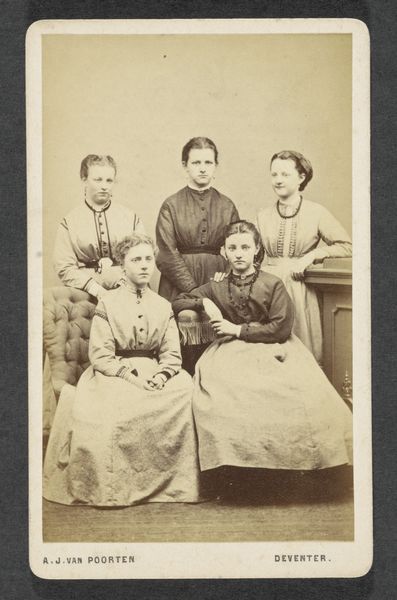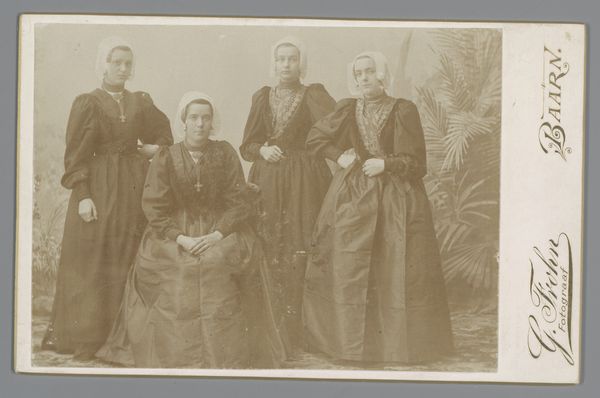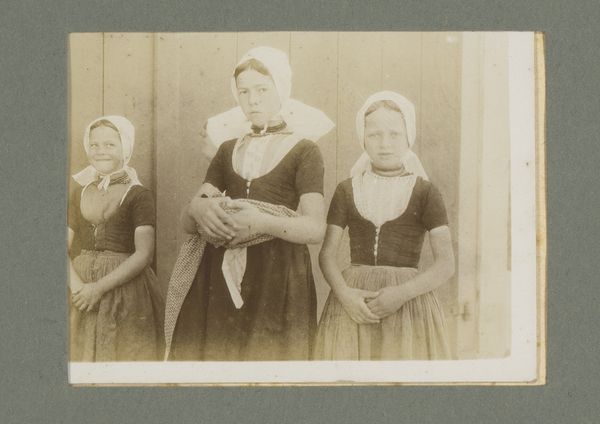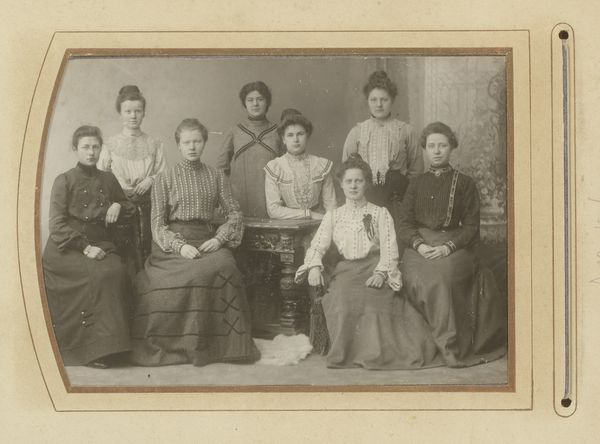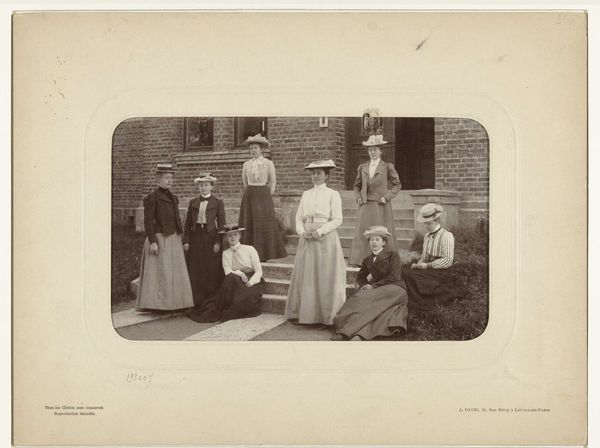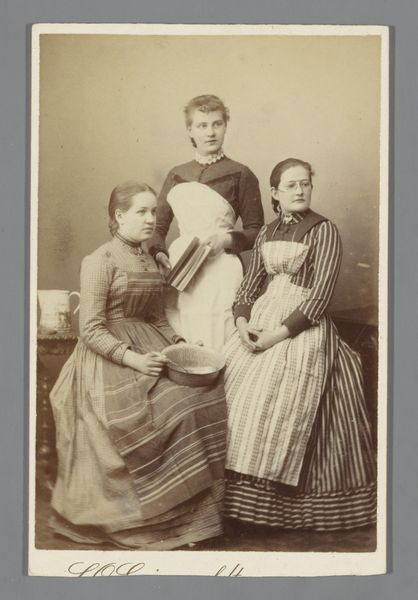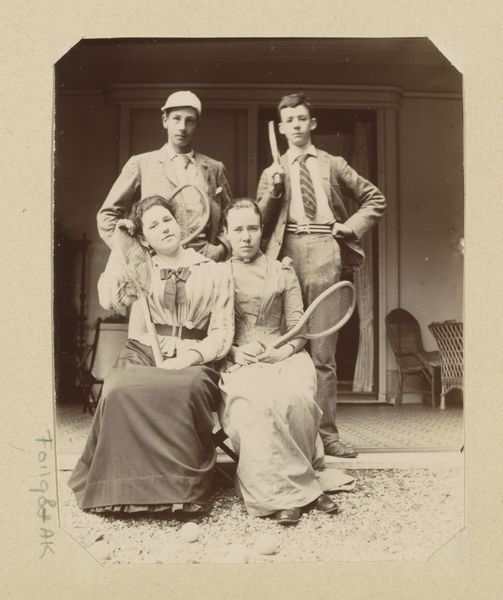
Groepsportret van kinderen in klederdracht van Walcheren c. 1875 - 1900
0:00
0:00
carlwilhelmbauer
Rijksmuseum
photography
#
portrait
#
photography
#
historical photography
#
historical fashion
#
19th century
#
genre-painting
Dimensions: height 108 mm, width 167 mm
Copyright: Rijks Museum: Open Domain
Curator: Here we have a historical photograph by Carl Wilhelm Bauer, "Groepsportret van kinderen in klederdracht van Walcheren," which roughly translates to "Group Portrait of Children in Traditional Costume from Walcheren." It dates to sometime between 1875 and 1900. Editor: My first impression is one of somber dignity. Despite their youth, the children all project a striking formality. The composition seems rigidly posed. Curator: Precisely. Let’s consider the formal elements: the limited sepia tones concentrate the gaze. The tight framing emphasizes the rigid verticality of the figures and architectural backdrop. These elements work together to create a specific aesthetic. The formal values create an effect of… constraint, almost. Editor: It’s more than that. These aren’t just "children"; they are embodiments of a culture, perhaps at a time when that culture was undergoing significant change. Their clothing—the meticulously rendered bonnets and dark dresses—speak volumes about identity and belonging. Their faces, especially the older girls, show an awareness of being seen, of representing something larger than themselves. There's a powerful narrative of tradition being consciously preserved and performed. Curator: That intersection between representation and lived experience raises an interesting point about the indexical nature of photography itself. Bauer’s photograph, while seemingly straightforward in its documentary approach, is carefully constructed. He isn't just capturing an image; he is framing a cultural narrative. The semiotic reading here is about visual signifiers of group identity and how the composition emphasizes collective over the individual experience. Editor: And the social context: These images of children in traditional dress were often circulated as ethnographic documents, or even postcards for tourists, subtly reinforcing colonial power structures and "othering." To understand photographs like this, we have to recognize its participation within those dynamics, and even its potential to both celebrate and exoticize. Curator: This photograph truly reveals the power of composition and tonality in conveying much more than just a portrait. I will definitely reconsider historical photography in general. Editor: Agreed, it invites a deeper understanding of its subjects and cultural work. What starts as a static image transforms into a rich field for exploring issues of representation, power, and identity.
Comments
No comments
Be the first to comment and join the conversation on the ultimate creative platform.


